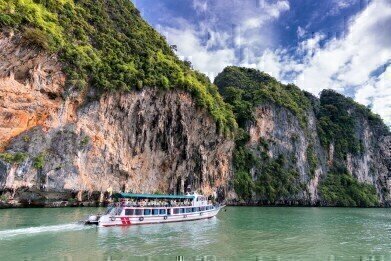Environmental Laboratory
Introducing SERVIR-Mekong – NASA’s New Environmental Monitoring Project
Sep 20 2015
NASA has teamed up with the US Agency for International Development (USAID) to add a fourth environmental monitoring centre to its arsenal. SERVIR-Mekong, which recently opened up in the Asian Disaster Preparedness Centre in Thailand, will now provide real-time information on climate and weather patterns to five countries in South East Asia.
Thailand, Vietnam, Cambodia, Laos and Burma (Myanmar) will now benefit from the space-based technology, which gathers information from satellites orbiting the Earth and allows scientists to make accurate predictions on weather behaviour based upon the data. This, in turn, can help the governments of the South East Asian countries put in place disaster contingency plans, manage their food supplies more efficiently and control their water and other natural resources.
The Fourth in a Line of SERVIR Centres
Taken from the Spanish word “servir” meaning “to serve”, the project was initially founded back in 2005 in Alabama at the Marshall Space Flight Centre, which still plays host to the SERVIR headquarters.
The first centre was launched the same year in Panama, giving important meteorological information to surrounding countries in Central America and the Dominican Republic. The second hub followed not long after in 2008, being set up in Kenya and serving the nations of Eastern and Southern Africa.
The third hub became the first in Asia in 2010. SERVIR-Himalaya was installed in Kathmandu and provides vital data to Afghanistan, Bangladesh, Bhutan, China, India, Nepal and Pakistan. Now, SERVIR-Mekong will strengthen Asian knowledge and foresight of coming weather patterns with its installation in Thailand.
“Under SERVIR-Mekong, we are tapping into the best available science and technology to help protect this region's vital ecosystems and the benefits they provide to society,” explained Beth Paige to IBN Live. Beth is USAID’s director for Regional Development in Asia. “Already, Asian scientists, NASA scientists and others are beginning to develop tools to build resilience and contribute to tackling some of the region's most pressing challenges.”
Part of a Growing Network of Resource Management
Whilst SERVIR’s fourth hub represents an important step forward in Asian weather monitoring, resource management and disaster prevention and response, it’s far from the only measure being taken to safeguard the continent.
For example, a wide range of water quality monitoring technologies are being developed across the world, specifically for use in Asia. Historically, the continent has faced serious issues with the cleanliness of its streams, rivers and lakes, and over recent years, governments both within and outwith Asia have attempted to address the problem by investing sums in new methodologies of detecting and addressing impurities.
Meanwhile, the deteriorating condition of the Bagmati River in Kathmandu has not gone unnoticed, either. The article Kathmandu Particpatory River Monitoring - A Model for South Asia Methodology and Lessons Learned discusses how new technologies in the Nepalese capital can provide inspiration to the surrounding nations on how to clean up their waterways.
Digital Edition
IET 34.2 March 2024
April 2024
Gas Detection - Biogas batch fermentation system for laboratory use with automatic gas analysis in real time Water/Wastewater - Upcycling sensors for sustainable nature management - Prist...
View all digital editions
Events
Apr 30 2024 Melbourne, Australia
Apr 30 2024 Birmingham, UK
May 03 2024 Seoul, South Korea
May 05 2024 Seville, Spain
May 06 2024 Minneapolis, MN, USA


















